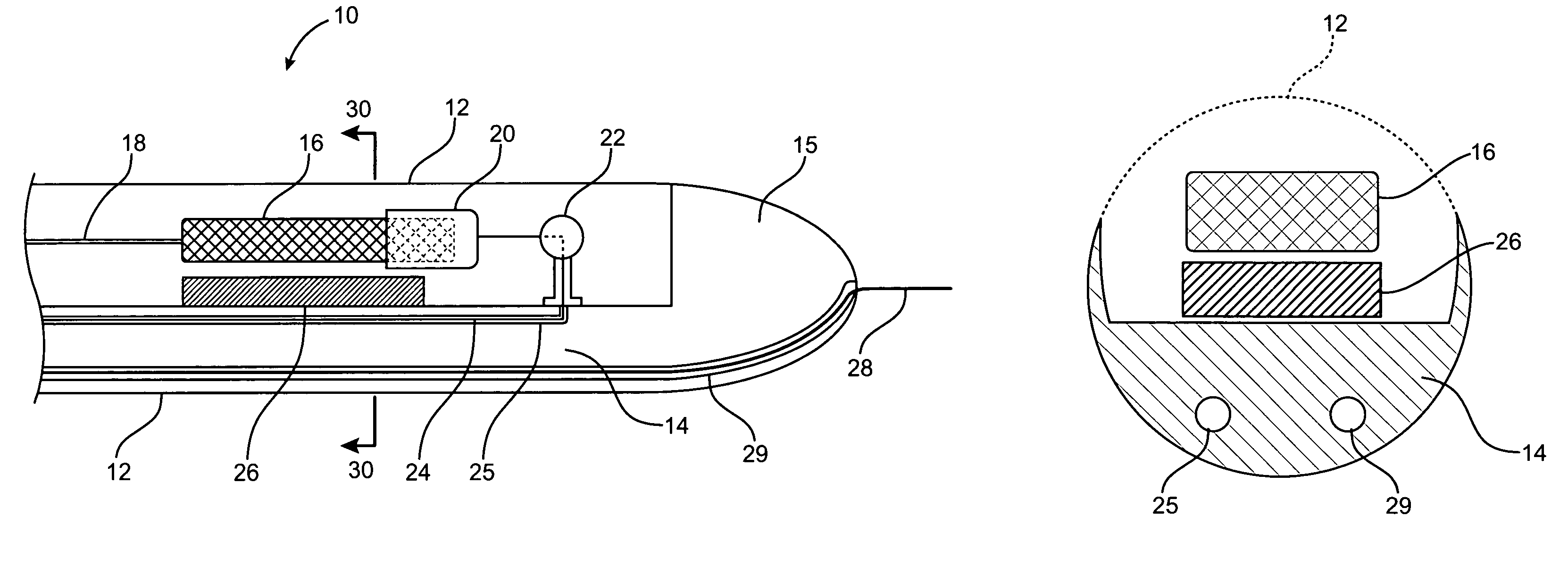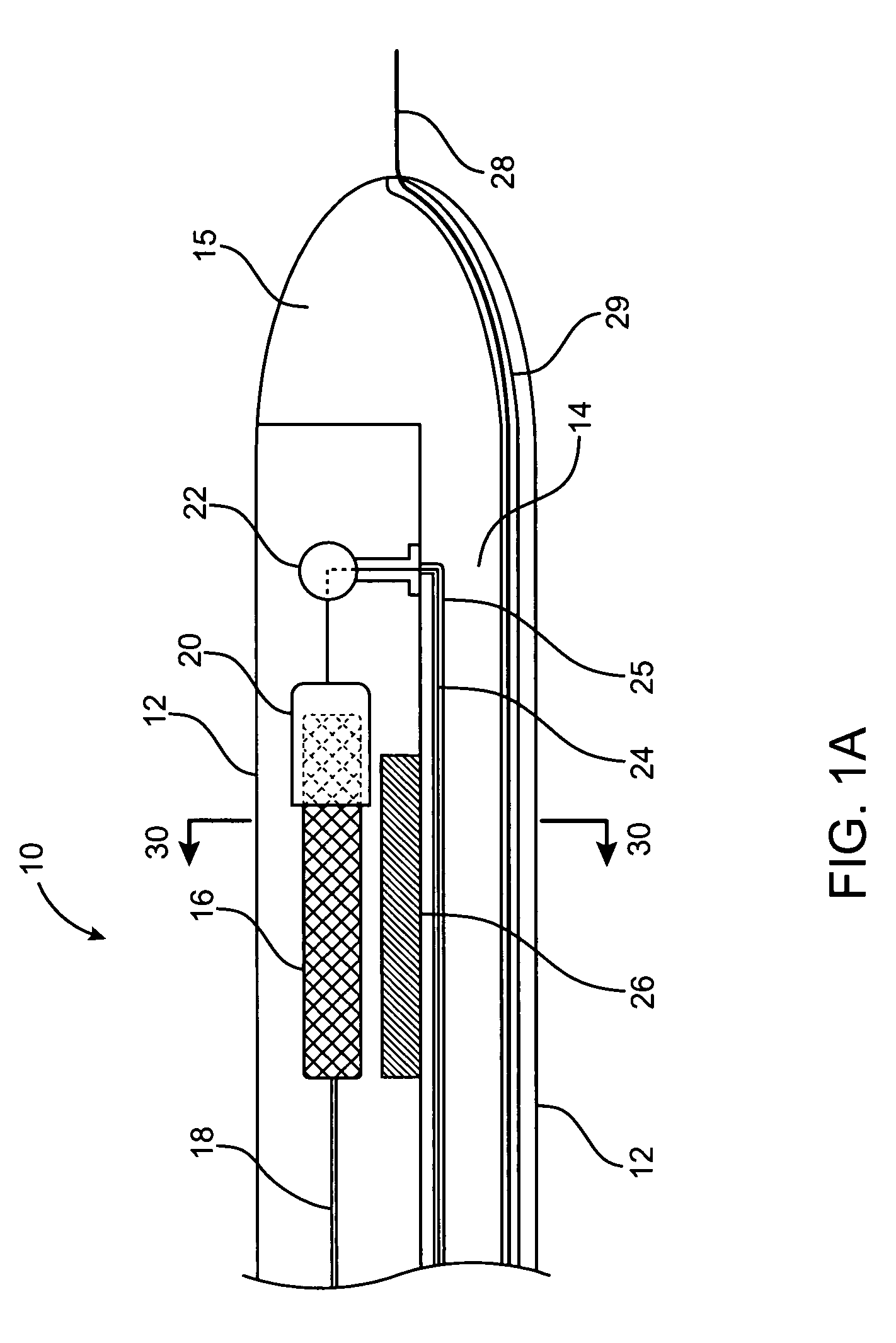Device for delivering a sensor to the endovascular system and method of use
a sensor and endovascular technology, applied in the field of devices for introducing sensors into the endovascular system, can solve problems such as health risk, gradual vessel expansion, blood clots or internal bleeding,
- Summary
- Abstract
- Description
- Claims
- Application Information
AI Technical Summary
Benefits of technology
Problems solved by technology
Method used
Image
Examples
second embodiment
[0034]FIG. 2 provides a cross sectional side view of the delivery device 40, the invention. This delivery device includes a catheter body 14 with a tapered nose cone 15, and optionally, a lumen 29 to accommodate guide wire 28. A sheath 12 is rotatably attached to the proximal end of the catheter nose cone, and covers the sensor 16 and lead 18. The lead 18 may not be present, if not required for the functioning of the sensor 16. Deployment device 26 may be either a compressible material or an expandable balloon. If deployment device 26 consists of an expandable balloon, it is connected to a lumen 33, the lumen being connected to a reservoir of flowable gel or liquid at the proximal end of the device, as is known in the prior art. If a compressible material is used, it is maintained in its compressed state by the sensor 16 and sheath 12 until the sheath 12 is opened. The sheath 12 includes an oblong opening 32, large enough for the sensor 16 to pass through. As shown in FIG. 2, the sh...
third embodiment
[0036]the present invention is shown in FIG. 4A and FIG. 4B. Delivery device 50 includes a catheter 14 with a tapered or rounded nose cone 15. Proximal to the nose cone 15, is a chamber 36 of a size that can accommodate the sensor 16. The lead 18, if present, is disposed along the exterior of the catheter 14, held in place by any appropriate bioadhesive, for example, a glucose-based bioadhesive, or with a hook at the proximal part of the sensor. Slidably attached to the catheter 14 is a sheath 34, placed so that it covers the chamber 36 when in the closed position (FIG. 4A), and presents a smooth exterior. Attached to the proximal end of the sheath 34 is a wire or lever 38 that provides a means of moving the sheath 34. When the sheath 34 is in the closed position, as in FIG. 4A, the wire or lever 38 may be pushed to move the sheath 34 forward along the catheter toward the nose cone 15, until it is in the open position (FIG. 4B). From the open position, the sheath 34 may be returned ...
PUM
 Login to View More
Login to View More Abstract
Description
Claims
Application Information
 Login to View More
Login to View More - R&D
- Intellectual Property
- Life Sciences
- Materials
- Tech Scout
- Unparalleled Data Quality
- Higher Quality Content
- 60% Fewer Hallucinations
Browse by: Latest US Patents, China's latest patents, Technical Efficacy Thesaurus, Application Domain, Technology Topic, Popular Technical Reports.
© 2025 PatSnap. All rights reserved.Legal|Privacy policy|Modern Slavery Act Transparency Statement|Sitemap|About US| Contact US: help@patsnap.com



